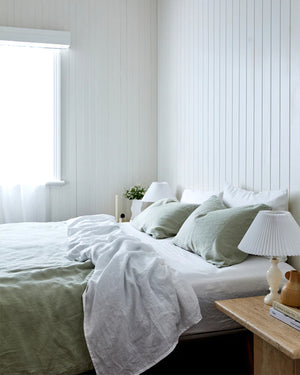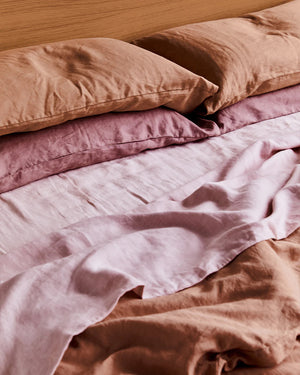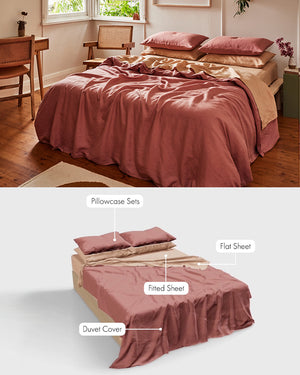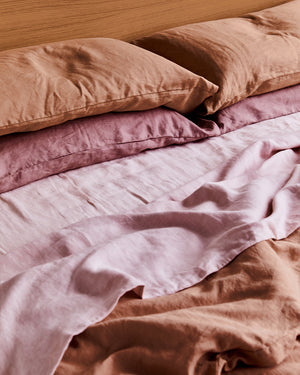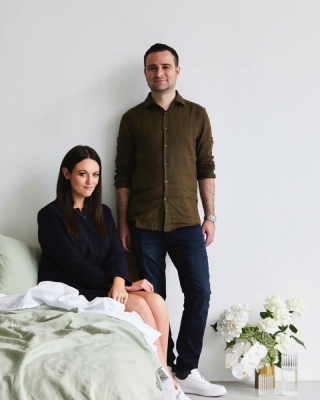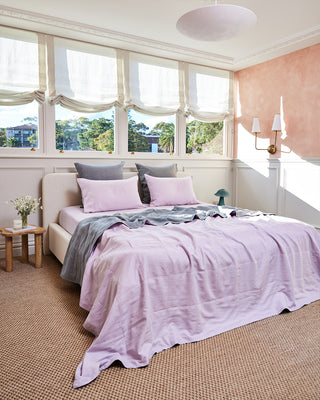How to Set Up a Pain-Free Home Office, According to a Physiotherapist
With working from home fast becoming the new norm, it's inevitable that our bodies will take some time to adjust. Working from home can bring with it many benefits that help to keep our work/life balance in check, but the problem arises when injuries and aches start to develop as a result of a less than ideal setup.
We've discussed all the ways to style your office so that you'll actually want to use it, and today we've enlisted the expert advice of Gaetano Squadrito—Associate Senior Physiotherapist at Sydney-based CBD Sports Focus Physio—to help us navigate the dos and don'ts of setting up a posture-perfect place to work.
Gaetano explained to us that office-related injuries are very common, and make up close to 50% of the injuries his clients complain of. It can also be tricky to differentiate the difference between a harmless ache and something serious, so Gaetano advises, "if your complaint is a) not settling down by itself within the week, or b) it is starting to impact your daily schedule, then it is time to seek a Physiotherapists' help."
When it comes to the causes of this pain, Gaetano says there are a few main factors he sees consistently. "Easily the most common cause of office-related injuries is poor work station ergonomics," he said. "How you set up your desk, how many screens you use and where they are positioned, your chair height, whether you use a mouse pad or a vertical mouse; all of these factors can contribute to mechanical stress and compensatory strategies that lead to overuse or overload of particular structures of your neck, shoulders, wrists or lower back."
If you're finding yourself left with a tight neck and shoulders at the end of the day, you're not alone. "Shoulder and neck tightness is probably the single most prevalent complaint of office workers," Gaetano tells us. Another common condition that he treats at his practice is tension-type headaches. "They usually come on gradually towards the end of the day, but some people can wake up with them too, and they can cover parts of your head on both sides or just the one."
In terms of how to set up and use your own home office for optimal productivity sans pain, here are Gaetano's 8 top tips.
1. Give yourself a good amount of desktop space.
Have enough desktop space to hold all of your working documents or equipment withing arms length. And try to use a surface in your home that is around 700mm tall. For a lot of people this will be sufficient, but for those who are shorter or taller, use something lower or higher.
2. Use a decent chair.
Something ideally with adjustable seat height, an adjustable backrest that can move in towards your back and vertically, as well as a well-padded seat that has enough room for you to push your back up against the backrest with a large majority of your legs in contact with the seat.
3. Adjust your workspace accordingly.
Adjust the set height until your shoulders are relaxed but not slumped, and make sure that your back is supported and up against the backrest. Push your chair in under the desk so that you are able to type away on the keyboard with your elbows held at 90° by your side. You do want to have your knees slightly lower then your hips, this will help to reduce the load on your legs, and some people may need a footrest to help them out.
4. Minimise laptop or tablet use.
They are wonderfully convenient things but are not intended for long term use. Ideally use a separate screen, keyboard and mouse, but if not; raise the laptop screen up so that the top edge is in line or just below your eye height.
5. Start your day well.
Get up at a regular time and start your day with some morning exercise, yoga or simple stretching in the morning sun. Not only will this be great to work out the stiffness of the day before, but your blue-light receptors in your eyes will be stimulated, which will result in some hormone release, and tell your body that it needs to be ready for the day.
6. Take regular breaks.
Just like being in the office, work out your natural work-rest flows and set a timer for a scheduled breaks. This could be 5 or 10 minutes, where you get up, get another glass of water, perform a few quick stretches or have a quick peruse of Tik Tok (but hopefully not the last). I usually work on 45mins on, and a 10-15 minute break.
7. Give yourself a proper lunch break.
This is your time to do whatever you want. If you are feeling stiff and tight, and are not a morning person, use this time to go out for a walk in the sun.
8. Have a few exercise tools around to use.
I usually recommend a foam roller, a spikey massage ball and a resistance band. If you have these you can work out any tight muscle. If you can spare the money, invest in the better brands because they will last a lot longer then the cheaper ones.
To find out more information on posture or ergonomics, or to book a consultation with Gaetano, visit the CBD Sports Focus website.
Lead image by Jasmine Dowling.
Now that you've got an ergonomic space, it's time to style it to suit your personality.






